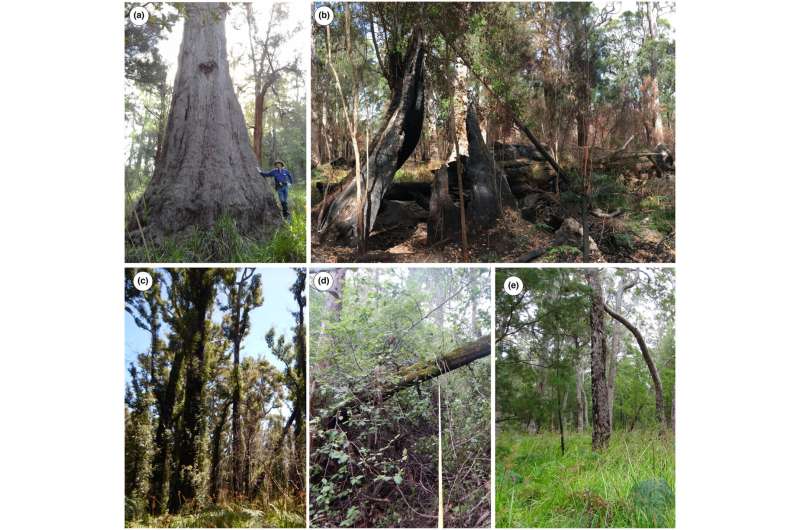This article has been reviewed according to Science X's editorial process and policies. Editors have highlighted the following attributes while ensuring the content's credibility:
fact-checked
peer-reviewed publication
trusted source
proofread
Study finds why prescribed-burn forests in Western Australia became so fire-prone

New Curtin research has shown how fuel reduction burning aimed at decreasing the likelihood of bushfires in Western Australia's South West forests have apparently increased fire risk.
Lead researcher Associate Professor Phillip Zylstra, from the School of Molecular and Life Sciences at Curtin University said his study of Red Tingle forest in the Walpole-Nornalup National Park found prescribed burning caused mass thickening of vegetation beneath the main forest canopy, which could result in greater fire risk.
"The findings suggest southwest forests grow in a way that naturally reduces fire risk once they have recovered from disturbance such as natural bushfire, but prescribed burning has undermined this natural process to create a more fire-prone landscape," Associate Professor Zylstra said.
"When forest habitat is cleared through controlled burns, new plants regrow close to the ground where they are easily ignited. As they grow larger, the understory becomes dense and flammable.
"On the other hand, our study finds that a natural forest cycle would see these short-lived 'colonizer' shrubs disappear and the understory become more sparsely vegetated over time.
"Taller plants 'self-prune' or shed their lower branches and, after some decades, grow beyond the reach of many flames. Instead of acting as fuel, they slow the wind beneath them and become 'overstorey shelter.'"
Associate Professor Zylstra said the findings explained a recent analysis of state departmental fire records for forest management, which found that prescribed burned forests of the South West have experienced up to seven times more bushfire than forests with no prescribed burning.
"This new study explains how this occurred by coupling surveys conducted by experienced field ecologists, leading scientists, and volunteers in the southwest's Denmark region, with advanced fire behavior modeling," Associate Professor Zylstra said.
"Natural ecological processes have enabled fire sensitive species to thrive over eons. In the current heating, drying climate, our findings present the alternative possibility of 'ecological cooperation' with these natural processes, rather than domination."
Published in Functional Ecology, the research is titled "Mechanisms by which growth and succession limit the impact of fire in a south-western Australian forested ecosystem."
More information: Philip Zylstra et al, Mechanisms by which growth and succession limit the impact of fire in a south‐western Australian forested ecosystem, Functional Ecology (2023). DOI: 10.1111/1365-2435.14305
Journal information: Functional Ecology
Provided by Curtin University




















